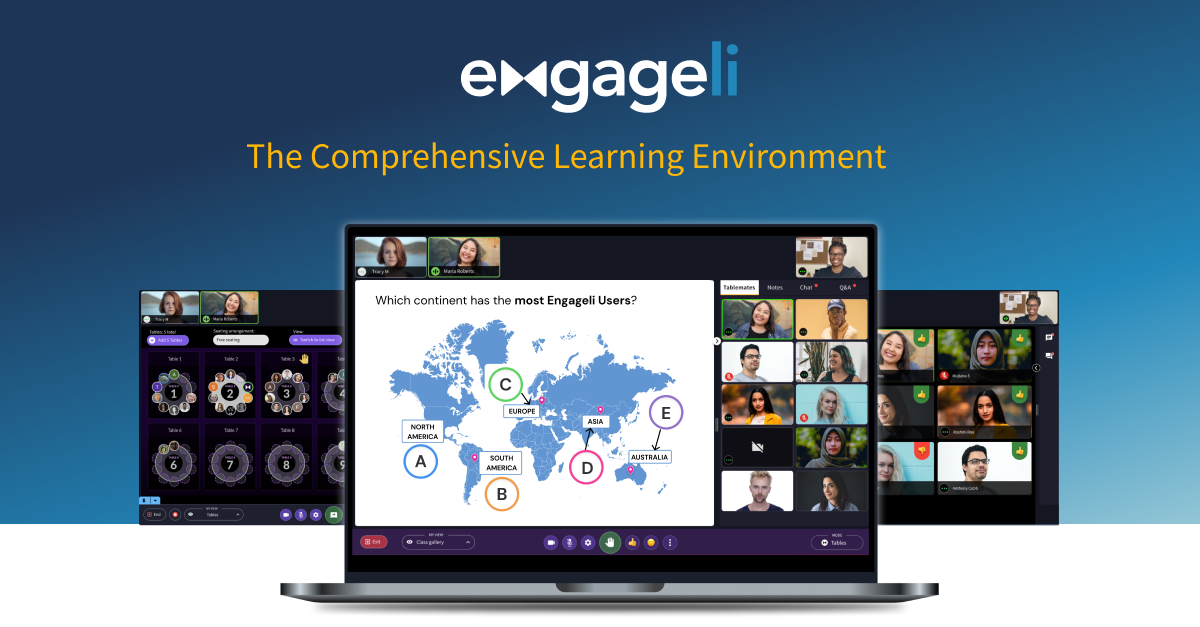I just returned from the UPCEA Annual Conference in Orlando, FL which brought together thought leaders and practitioners in the field of professional, continuing, and online education. This is the first conference I’ve attended live post-pandemic lockdown; it felt so great to be back in person with an intentional learning community. It was great to hug people I hadn’t seen in years, and connect with new peers through serendipitous encounters, which evolved into shared meals, new learnings, and now, relationships.
As I’ve settled back into my work-from-home routine, processing the keynotes, sessions, and networking conversations, one phrase continues to resonate loudly in my mind: flexibility with the community. Paul LeBlanc, President at Southern New Hampshire University, said (and I am paraphrasing), “Students want to be in an intentional learning community. They also want flexibility in how they access their learning. We’re never going to see ‘the classroom’ on a list of ‘high impact interventions’ …” The reason this resonates with me is that we shouldn’t unnecessarily couple community and flexibility in limiting ways.
Similar to the (concurrent) “Let’s Not Reomantize 2019 for Online Learning” conversation Phil Hill and Joe Moreau had at OLC Innovate 2022 I found that while there are a few institutions looking back with rose-colored glasses, aiming to “go back to normal, and the way it was,” most sessions were full of caring professionals all asking variations of the same questions: How do we support our (tired) faculty in not just reacting to the situation, but evolving through what we’ve learned? How do we create an evolving learning environment to meet our students where they are, and where they will be?
I’d like to think it’s an easy solve, but I know it’s not. What follows are the top three needs I took away from conversations last week, towards the goal of designing an agile, flexible learning experience both instructors and learners deserve.
-
-
- Courage. It’s time to reimagine our use of physical spaces. So much has been invested on many of our campuses to create space where people want to gather, where they palpably see and feel their belonging. This is still critical, and perhaps even more so than before, as the loneliness sparked by the last two years has highlighted. Let's remember those who experience intermittent isolation even outside of a pandemic. How do we reimagine how and when these spaces are used? Do we all need to be on campus every day? How much time and how do we spend that time together to create relationships that can be strengthened by connecting online without time constraints?
- Integration and infrastructure across solutions. The most thoughtful teaching and learning experts I spoke with are carefully vetting potential technologies, so faculty don’t have to. They’re thinking not only about its particular use, but how it connects with their current and future systems, and how they will support faculty in adoption and mastery development. Institutional communities that come together to develop the best way to support their learners, which will be different for each institution, are able to more efficiently and effectively adopt (or reject) and benefit from new technologies, structures, and processes.
- Technology that develops alongside you. Live online. Hybrid. Asynch. Each institution is at a different place in terms of where they are today, where they want to go, and the path and timeline they will take. Instead of one size fits all, it’s what fits today, and their vision of growth. For many, this is a current move from emergency remote teaching to intentional online learning in their current live synchronous options, building community in the classroom but not only in the physical classroom. This is also an eye to expanded hybrid and hyflex options, as well as building and updating asynchronous and self-paced offerings to meaningfully serve learners across the spectrum of flexibility -- without defaulting to flexible = alone.
- Bonus. When you have to mask, make it match. IYKYK ;)
- Courage. It’s time to reimagine our use of physical spaces. So much has been invested on many of our campuses to create space where people want to gather, where they palpably see and feel their belonging. This is still critical, and perhaps even more so than before, as the loneliness sparked by the last two years has highlighted. Let's remember those who experience intermittent isolation even outside of a pandemic. How do we reimagine how and when these spaces are used? Do we all need to be on campus every day? How much time and how do we spend that time together to create relationships that can be strengthened by connecting online without time constraints?
-
Thank you to the entire UPCEA community for a week of learning and connection. I’m excited to build the future with you; one in which learners learn with and through their peers, with flexibility and inclusivity for schedule, geography, and changing personal needs.

